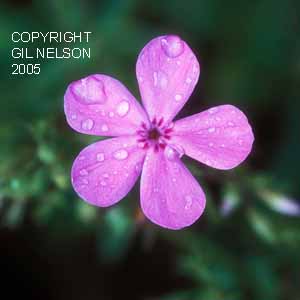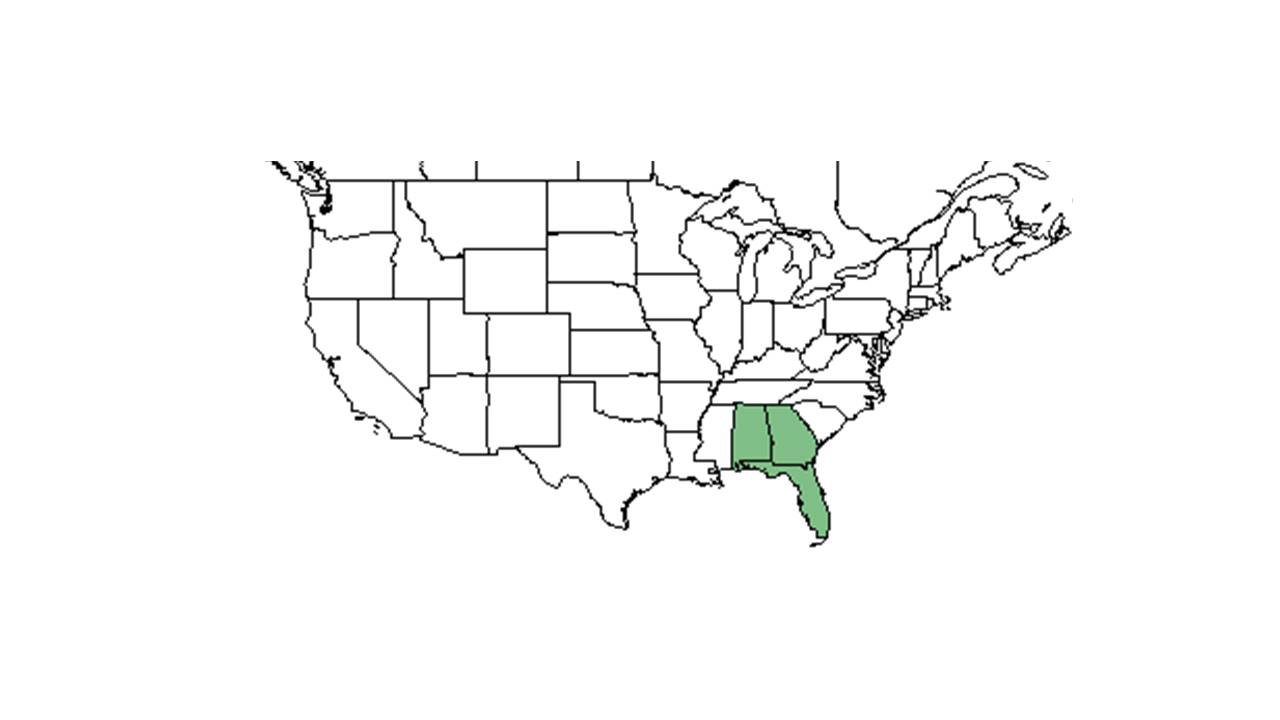Difference between revisions of "Phlox floridana"
Krobertson (talk | contribs) |
Emmazeitler (talk | contribs) |
||
| Line 19: | Line 19: | ||
Common name: Florida phlox | Common name: Florida phlox | ||
==Taxonomic notes== | ==Taxonomic notes== | ||
| + | Synonyms: none.<ref name="weakley">Weakley, A.S. 2015. Flora of the southern and mid-atlantic states. Working Draft of 21 May 2015. University of North Carolina at Chapel Hill, Chapel Hill, North Carolina.</ref> | ||
| + | |||
| + | Varieties: none.<ref name="weakley">Weakley, A.S. 2015. Flora of the southern and mid-atlantic states. Working Draft of 21 May 2015. University of North Carolina at Chapel Hill, Chapel Hill, North Carolina.</ref> | ||
==Description== | ==Description== | ||
<!-- Basic life history facts such as annual/perrenial, monoecious/dioecious, root morphology, seed type, etc. --> | <!-- Basic life history facts such as annual/perrenial, monoecious/dioecious, root morphology, seed type, etc. --> | ||
| + | ''P. floridana'' is an herbaceous plant with an erect stem. Its leaves are lanceolate to linear. The leaves are largest below the middle of the stem and the upper leaves are opposite or subopposite. The cymes open, with the lowest branches elongate and less than 1 cm long. The sepals are awned, with the awn being 0.5-3.0 mm long. The corolla is usually glandular-pubescent or pilose (rarely glabrous), and colored blue, lavender, or pink. The pedicels are 1-8 mm long.<ref name="weakley">Weakley, A.S. 2015. Flora of the southern and mid-atlantic states. Working Draft of 21 May 2015. University of North Carolina at Chapel Hill, Chapel Hill, North Carolina.</ref> | ||
==Distribution== | ==Distribution== | ||
| + | ''P. floridana'' ranges from southwest Georgia and southeast Alabama, south to Florida Panhandle and northwest peninsular Florida.<ref name="weakley">Weakley, A.S. 2015. Flora of the southern and mid-atlantic states. Working Draft of 21 May 2015. University of North Carolina at Chapel Hill, Chapel Hill, North Carolina.</ref> | ||
| + | |||
==Ecology== | ==Ecology== | ||
===Habitat=== <!--Natural communities, human disturbed habitats, topography, hydrology, soils, light, fire regime requirements for removal of competition, etc.--> | ===Habitat=== <!--Natural communities, human disturbed habitats, topography, hydrology, soils, light, fire regime requirements for removal of competition, etc.--> | ||
| − | ''P. floridana'' has been documented to occur on a sandy ridge in a longleaf pine/scrub-oak woodland; pine/hardwood forest; open piney areas; sandy soil of open pine flatwoods; amongst grasses in a burned longleaf pine forest; along the edge of pine-oak-hickory woods; semi-boggy slope of longleaf pine savanna; and an annually burned pine savanna. It has been observed to grow on sandy roadsides, picnic areas, dry sand and gravel in an old field, cut and burned over pine flatwoods, and along a powerline corridor.<ref name=fsu> Florida State University Robert K. Godfrey Herbarium database. URL: http://herbarium.bio.fsu.edu. Last accessed: July 2015. Collectors: Robert K. Godfrey, K. Craddock Burks, Loran C. Anderson, Michael Cartrett, Robert Doren, Robert Kral, Sidney McDaniel, C. Jackson, Andre F. Clewell, S. W. Leonard, W. W. Baker, Cecil R Slaughter, R.A. Norris, R. Komarek. States and Counties: Florida: Bay, Calhoun, Clay, Franklin, Gadsden, Gulf, Holmes, Jackson, Jefferson, Leon, Liberty, Okaloosa, Taylor, Wakulla, Walton. Georgia: Grady, Thomas. Compiled by Tall Timbers Research Station and Land Conservancy. </ref> Soils observed include sand, dry sandy loam, drying loamy sand, and in shaded loose loamy sand. <ref name=fsu/> Associated species include ''Pinus palustris, Tetragonotheca, Onosmodium, Pediomelum, Quercus laurifolia, Quercus margarettae, Quercus incana, Quercus laevis, Vaccinium arboreum, Vaccinium stamineum, Opuntia humifusa and Asclepias''.<ref name=fsu/> | + | ''P. floridana'' has been documented to occur on a sandy ridge in a longleaf pine/scrub-oak woodland; pine/hardwood forest; open piney areas; sandy soil of open pine flatwoods; amongst grasses in a burned longleaf pine forest; along the edge of pine-oak-hickory woods; semi-boggy slope of longleaf pine savanna; and an annually burned pine savanna. It has been observed to grow on sandy roadsides, picnic areas, dry sand and gravel in an old field, cut and burned over pine flatwoods, and along a powerline corridor.<ref name=fsu> Florida State University Robert K. Godfrey Herbarium database. URL: http://herbarium.bio.fsu.edu. Last accessed: July 2015. Collectors: Robert K. Godfrey, K. Craddock Burks, Loran C. Anderson, Michael Cartrett, Robert Doren, Robert Kral, Sidney McDaniel, C. Jackson, Andre F. Clewell, S. W. Leonard, W. W. Baker, Cecil R Slaughter, R.A. Norris, R. Komarek. States and Counties: Florida: Bay, Calhoun, Clay, Franklin, Gadsden, Gulf, Holmes, Jackson, Jefferson, Leon, Liberty, Okaloosa, Taylor, Wakulla, Walton. Georgia: Grady, Thomas. Compiled by Tall Timbers Research Station and Land Conservancy. </ref> Soils observed include sand, dry sandy loam, drying loamy sand, and in shaded loose loamy sand.<ref name=fsu/> Associated species include ''Pinus palustris, Tetragonotheca, Onosmodium, Pediomelum, Quercus laurifolia, Quercus margarettae, Quercus incana, Quercus laevis, Vaccinium arboreum, Vaccinium stamineum, Opuntia humifusa and Asclepias''.<ref name=fsu/> |
''Phlox floridana'' is an indicator species for the Clayhill Longleaf Woodlands community type as described in Carr et al. (2010).<ref>Carr, S.C., K.M. Robertson, and R.K. Peet. 2010. A vegetation classification of fire-dependent pinelands of Florida. Castanea 75:153-189.</ref> | ''Phlox floridana'' is an indicator species for the Clayhill Longleaf Woodlands community type as described in Carr et al. (2010).<ref>Carr, S.C., K.M. Robertson, and R.K. Peet. 2010. A vegetation classification of fire-dependent pinelands of Florida. Castanea 75:153-189.</ref> | ||
| Line 33: | Line 39: | ||
===Seed dispersal=== | ===Seed dispersal=== | ||
| − | This species is thought to be dispersed by wind. <ref>Kirkman, L. Katherine. Unpublished database of seed dispersal mode of plants found in Coastal Plain longleaf pine-grasslands of the Jones Ecological Research Center, Georgia.</ref> | + | This species is thought to be dispersed by wind.<ref>Kirkman, L. Katherine. Unpublished database of seed dispersal mode of plants found in Coastal Plain longleaf pine-grasslands of the Jones Ecological Research Center, Georgia.</ref> |
<!--===Seed bank and germination===--> | <!--===Seed bank and germination===--> | ||
Revision as of 18:44, 16 November 2020
| Phlox floridana | |
|---|---|

| |
| Photo taken by Gil Nelson | |
| Scientific classification | |
| Kingdom: | Plantae |
| Division: | Magnoliophyta - Flowering plants |
| Class: | Magnoliopsida – Dicotyledons |
| Order: | Solanales |
| Family: | Polemoniaceae |
| Genus: | Phlox |
| Species: | P. floridana |
| Binomial name | |
| Phlox floridana Benth. | |

| |
| Natural range of Phlox floridana from USDA NRCS Plants Database. | |
Common name: Florida phlox
Contents
Taxonomic notes
Synonyms: none.[1]
Varieties: none.[1]
Description
P. floridana is an herbaceous plant with an erect stem. Its leaves are lanceolate to linear. The leaves are largest below the middle of the stem and the upper leaves are opposite or subopposite. The cymes open, with the lowest branches elongate and less than 1 cm long. The sepals are awned, with the awn being 0.5-3.0 mm long. The corolla is usually glandular-pubescent or pilose (rarely glabrous), and colored blue, lavender, or pink. The pedicels are 1-8 mm long.[1]
Distribution
P. floridana ranges from southwest Georgia and southeast Alabama, south to Florida Panhandle and northwest peninsular Florida.[1]
Ecology
Habitat
P. floridana has been documented to occur on a sandy ridge in a longleaf pine/scrub-oak woodland; pine/hardwood forest; open piney areas; sandy soil of open pine flatwoods; amongst grasses in a burned longleaf pine forest; along the edge of pine-oak-hickory woods; semi-boggy slope of longleaf pine savanna; and an annually burned pine savanna. It has been observed to grow on sandy roadsides, picnic areas, dry sand and gravel in an old field, cut and burned over pine flatwoods, and along a powerline corridor.[2] Soils observed include sand, dry sandy loam, drying loamy sand, and in shaded loose loamy sand.[2] Associated species include Pinus palustris, Tetragonotheca, Onosmodium, Pediomelum, Quercus laurifolia, Quercus margarettae, Quercus incana, Quercus laevis, Vaccinium arboreum, Vaccinium stamineum, Opuntia humifusa and Asclepias.[2]
Phlox floridana is an indicator species for the Clayhill Longleaf Woodlands community type as described in Carr et al. (2010).[3]
Phenology
P. floridana has been observed flowering April through November with peak inflorescence in May[2][4]. It has been observed to resprout and flower within three months of being burned.[5]
Seed dispersal
This species is thought to be dispersed by wind.[6]
Fire ecology
It flowers within two months of burning in early summer. KMR
Conservation and management
Cultivation and restoration
Photo Gallery
References and notes
- ↑ 1.0 1.1 1.2 1.3 Weakley, A.S. 2015. Flora of the southern and mid-atlantic states. Working Draft of 21 May 2015. University of North Carolina at Chapel Hill, Chapel Hill, North Carolina.
- ↑ 2.0 2.1 2.2 2.3 Florida State University Robert K. Godfrey Herbarium database. URL: http://herbarium.bio.fsu.edu. Last accessed: July 2015. Collectors: Robert K. Godfrey, K. Craddock Burks, Loran C. Anderson, Michael Cartrett, Robert Doren, Robert Kral, Sidney McDaniel, C. Jackson, Andre F. Clewell, S. W. Leonard, W. W. Baker, Cecil R Slaughter, R.A. Norris, R. Komarek. States and Counties: Florida: Bay, Calhoun, Clay, Franklin, Gadsden, Gulf, Holmes, Jackson, Jefferson, Leon, Liberty, Okaloosa, Taylor, Wakulla, Walton. Georgia: Grady, Thomas. Compiled by Tall Timbers Research Station and Land Conservancy.
- ↑ Carr, S.C., K.M. Robertson, and R.K. Peet. 2010. A vegetation classification of fire-dependent pinelands of Florida. Castanea 75:153-189.
- ↑ Nelson, G. PanFlora: Plant data for the eastern United States with emphasis on the Southeastern Coastal Plains, Florida, and the Florida Panhandle. www.gilnelson.com/PanFlora/ Accessed: 12 DEC 2016
- ↑ Robertson, K.M. 2015. Personal observation at the Pebble Hill Fire Plots on Pebble Hill Plantation near Thomasville, Georgia.
- ↑ Kirkman, L. Katherine. Unpublished database of seed dispersal mode of plants found in Coastal Plain longleaf pine-grasslands of the Jones Ecological Research Center, Georgia.